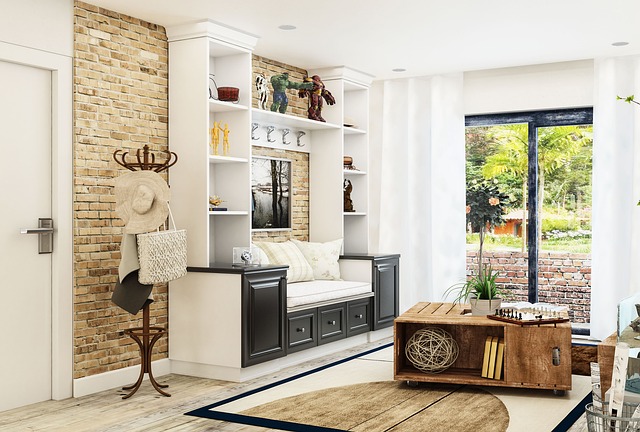Are you looking for ways to create extra space in your home? Or simply want to revamp the unused attic space? A loft conversion might just be what you need. The name says it all: a loft conversion is simply the process of converting an attic space into a functional room such as a bedroom, storage room, bathroom, playroom, or any other sort of room!
The Important Dos and Don’ts when Planning a Loft Conversion

A research study conducted some time ago noted that a loft conversion that includes a bedroom and bathroom may add up to 20% value to a simple three-bedroom and one-bathroom house. Maybe that’s why they’re still one of the most popular home renovation projects across the UK.
There are quite a few ways to go about loft conversions in London – a roof light conversion, dormer conversion, hip-to-gable conversion, or a mansard conversion. The kind of conversion best suited to your attic will depend on a variety of factors such as the location and shape of the available space.
The Dos
If you’re planning to convert office to loft, here are a few dos and don’ts to keep in mind:
Do know the rules
Before you do anything at all with your attic space, it’s important to check out the rules and regulations regarding your property. Most loft conversions in London fall under PD (permitted development), meaning you don’t need any sort of permission to make a loft room inside your attic. However, there are strict rules for conservation areas as well as listed buildings.
If your building is listed, you will need Listed Building Consent and if your house is in a conservation area, you will need to get relevant permissions for a loft conversion. You may also need Building Regulations approval and perhaps a Party Wall Agreement with your neighbors.
Do Plan Everything Out
Forward planning goes a long way towards saving you time, money, and unnecessary headaches. Having a clear vision of the project from the beginning helps to streamline the process from the get-go. Think about key aspects of the project such as the duration, cost, design, and the raw materials needed.
If you opt for a basic loft conversion that isn’t too complicated, you can expect the process to take up to four or five weeks. Six to twelve weeks will be needed for a loft conversion that involves extensive roof re-construction.
As we mentioned before, the style of loft conversion you choose will depend on the shape and size of your property. And to ensure that your new space lives up to all your expectations, it’s best to enlist the expertise of a loft conversion specialist.
Can I DIY?
If you’re good on the tools and yours is a basic project, you may be able to handle it on your own. However, if you feel that you’ll need external help, you should get a specialist on board from the start. The experience and foresight of a professional is invaluable when it comes to making sure your project runs smoothly – they can take care of the process from start to finish and ensure that your loft conversion is everything you ever dreamed of (and more!). They can also offer advice about the details – those little things that will take your loft conversion from good to amazing!
Do Be Prepared for Extra Expenses
You can expect your loft conversion to cost you somewhere between £25,000 to £50,000, depending on the work that needs to be done.
And although planning ahead helps to reduce surprise costs, you should always be prepared for contingent expenses. Quality home renovations aren’t cheap – everything from obtaining the relevant permissions to hiring a loft conversion specialist, and then the conversion itself will come with a price tag.
And dealing with an existing home is a different ballgame than building from scratch – even the best planned home renovations come with a few hidden expenses, so including a buffer amount in your budget is super important.
The best way to ensure that your budget is realistic is to make sure your loft conversion specialist gives you a detailed, itemized quotation before you start. As they say, ‘forewarned is forearmed’: it helps to know what you’re up for before you launch into your project.
The Don’ts
Home renovations are exciting, and it’s easy to get carried away with the end vision and skip over details. Here are a few things you shouldn’t do when you convert office to loft:
Don’t Forget the Big Picture
When you’re planning a renovation, we sometimes find it’s ‘hard to see the forest for the trees’: in other words, we get lost in the detail and can’t see the big picture.Ask yourself ‘how will this room link with the rest of the house?’ Make sure your renovations are in keeping with the style of the home.
You may want a particular type of staircase, but make sure it is practical and that everyone from a child to an elderly person can use it with ease. Other aspects such as heating, air conditioning, and cross ventilation should also be considered. Remember that being the topmost floor of the house, your loft will be one of the warmest places in your home, because heat will rise from below. Install air conditioning and insulation accordingly.
If Possible, Don’t Alter the Existing Roof Line
Many people opt for altering the existing roof line of the attic to create more space for their loft conversion. While this isn’t necessarily a bad thing, it’s important to remember that it will significantly add to your expenses.
Another point that’s worth mentioning on this subject is that you may risk going over the limits of planning permission if you alter the roof. If there is enough available space and ample headroom, it’s best to avoid altering the roof line.
To make the room feel more spacious and open, include as many windows as possible. Roof windows are a great option for loft conversions with limited wall space – they let in loads of natural light and help with ventilation too!
Don’t Move the Plumbing
Moving plumbing is expensive. If possible, design your loft conversion around the existing plumbing plan of the house.






